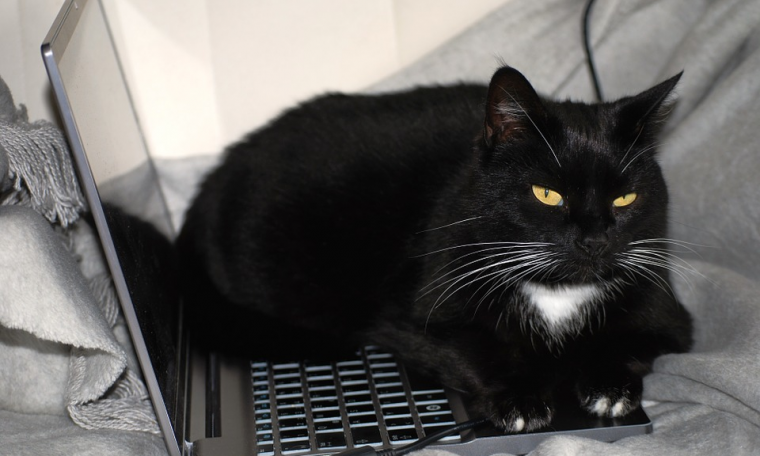
The Bombay cat breed is a cross between the Burmese and the American Shorthair. The original goal of the breeder was to have a domesticated feline that resembles that of a black panther. You might find them intimidating at first, but they are the sweetest companions you can ever have. They are easy to groom and love cuddling.
Some are born relatively healthy, and they are not usually prone to experience a specific medical condition. You can read more about possible health problems in cats on this page here. Because of their energy and curiosity, they need to have stimulation for them to be happy. Fortunately, you don’t need a lot of energy to keep them engaged and attentive.
Tips to Groom the Bombay Cat
- Brush their Coats
These felines don’t necessarily need high maintenance. You can brush their coats on occasion since they need soft and sleek fur. Once a week is more than enough, and you can pet them to remove the dead hairs and to keep their natural oils distributed across their bodies.
- Buy curry brushes because they are excellent for these types of coats
- You need to bathe them when they become messy. It’s no fun if they run around and spread mud inside your living room.
- Wipe at the Corner of their Eyes
- Wipe the corner of their eyes because these breeds are prone to excessive tears. They can be irritating, so check for dried tears and remove them as fast as possible. Use a damp cloth and be careful not to touch their golden eyes. Warm water can do the trick to remove the accumulated eye gunk but be sure to be gentle.
- Clean the Ears
All cats’ ears need regular cleaning. When you notice a significant build-up of wax, you may need to get a moistened swab or cotton ball to remove it. If you’re unsure of what to do, check with your veterinarian and see if they can do gentle bathing on your pet. Read more about a normal earwax buildup on this page: https://www.petmd.com/dog/care/what-normal-earwax-pets.
- Trimming of the Claws
Clip and trim the claws at least twice a month or more often if the need arises. You may notice that the claws may be getting sharp or extra long. Your cat may often get stuck in tight places because of its feet, and if so, it might be the best time to get them clipped.
- Start while the Bombay cat is still a kitten. You need to handle it while its claws are extended, and they should get used to this. You should also make them used to hearing the clippers’ sounds. Practice on a piece of pasta whenever they are nearby.
- Before you trim, you need to avoid the blood vessel and pink nerve located inside the nail.
- When you’re trimming, it’s best if your pet is fully relaxed on your lap and the head should face away from you. Lift the paws and gently push the pads away to see the extended claw.
- Remember that the clipping may take a lot of time and patience on your part. You can do their nails in two days if needed.
- Brushing the Teeth
Brushing teeth may sound challenging for many pet owners. However, this is still going to be essential for their health, so it’s best if you can make them used to this.
- Start by getting them used to the idea of brushing their teeth. Practice these by lifting the gums and gently rubbing your finger inside their mouths. If they feel okay with this step, you can gradually move on to brushing using toothpastes specifically designed for them.
- Give them a small amount of toothpaste to see if they like this. Apply only a small amount and make sure to reach the back teeth. The rub should be gentle enough and be careful about hurting their gums.
- While you’re in the process of brushing, look for signs of gum diseases. If your feline’s gums are generally pinkish and healthy, then there’s no need to worry.
Maintaining their Health
- Picking the Best Pets from Excellent Breeders
You need to pick legitimate breeders and those who can provide you with healthy cats. The cat breeds Bombay should have been handled and grown from the breeder’s home so they will be able to provide you with more information about their diet and possible diseases.Try to visit their place if possible and meet the kitten’s parents. Ask for health guarantees and references to ensure that your pet will not be born with congenital health issues.
- Watch Out for Difficulties in Breathing
This is a pet that has a relatively short snout. Because of these, they are usually having problems with brachycephalic airway syndromes. See if they are snoring or breathing loudly in the first few days after the adoption. In a more severe case, you should notice if your pet is quickly tired or it’s only breathing through its mouth.
- If they pass out for the first time, you need to take them to the vet because this could be a cardiac problem.
- Treatments inside the home include keeping them inside, helping them lose weight as they tend to be obese, keeping their stress levels down, and discourage strenuous activities.
- Your vet may also give you corticosteroids, anti-inflammatories, oxygen treatments, and other organic alternatives if they show symptoms that are related to breathing difficulties. If it’s necessary, surgery may be performed.




